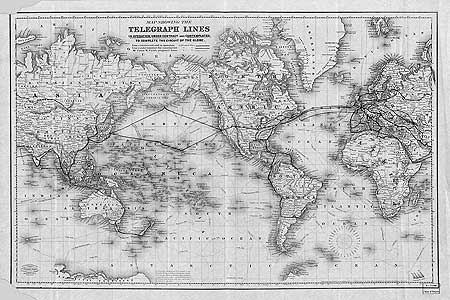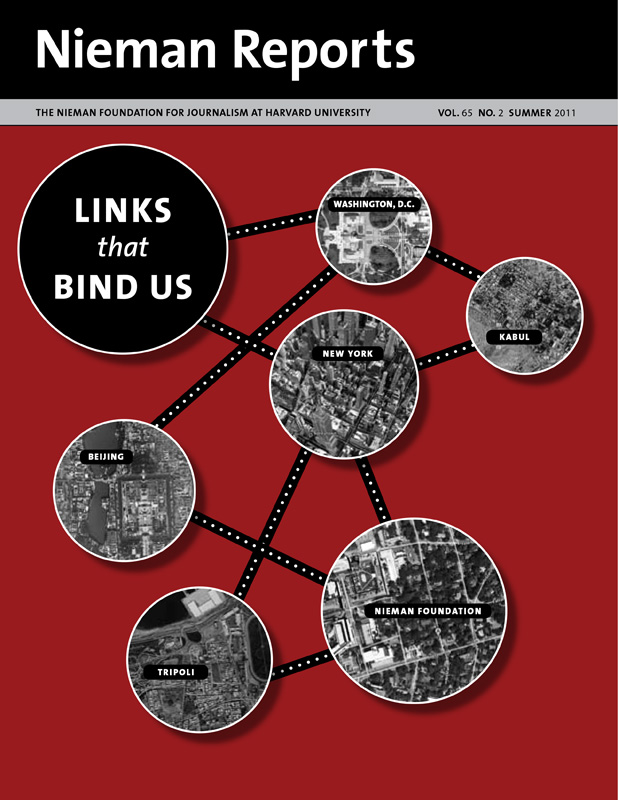
An 1855 map shows plans for telegraph lines connecting the entire world. Photo courtesy of the Library of Congress.
With its rhythmic clicks and electronic signal, the telegraph upended the centuries-old practice of people transporting the messages they wanted to send. Now, with a code of dots and dashes, words and ideas spread rapidly to places the sender might never go and to people she’d likely never meet. The code’s inventor, Samuel Morse, ruminating on where this mid-19th-century invention might lead, wrote:
| … it would not be long ere the whole surface of this country would be channeled for those nerves which are to diffuse with the speed of thought, a knowledge of all that is occurring throughout the land, making, in fact, one neighborhood of the whole country. |
Given the intercontinental connections the telegraph would forge, Morse could well have construed his neighborhood as the world. In time, others would.
Writing 150 years later about what he saw as the profound significance of the telegraph, James W. Carey, journalism professor and communications scholar, argued that it “reworked the nature of written language and finally the nature of awareness itself.” For decades the telegraph was the go-to electronic carrier of communication until the telephone and radio, television and the computer, then the Internet and mobile devices came along.
As each new technology appeared, what was vertical—top-down, one-way, with the purpose of delivering information—got flattened as peer reached out to peer with an increasing expectation of engagement. Words that traveled through these electronic lines, then wirelessly, grew to feel less like sermons and more like chants.
Even before palm-sized, always-on global communication devices surfaced, Carey had observed in the opening chapter of his 1989 book “Communication as Culture” that the dominant view of 20th-century communication as being about transmission didn’t fit so well anymore. In its place, he envisioned a re-emergence of the “ritual view.” In this view, he wrote, “news is not information but drama. … It invites our participation on the basis of our assuming, often vicariously, social roles within it.” Into this “ritual” orientation gets bundled, he explained, “terms such as ‘sharing,’ ‘participation,’ ‘association,’ ‘fellowship,’ and ‘the possession of a common faith.’ ”
Today, #, the Twitter hashtag, forms the cornerstone of a community convened by shared interests and sustained by communal action. Geography no longer defines community, nor is it a constraint on one forming. Word of mouth, as Mark Briggs writes in this issue of Nieman Reports, is being displaced by “word of link.” News and information continue to be transmitted—and this is where reporters step in. As technology encourages this shift toward the ritual, journalists will seek out new roles and purpose in places we call community.


